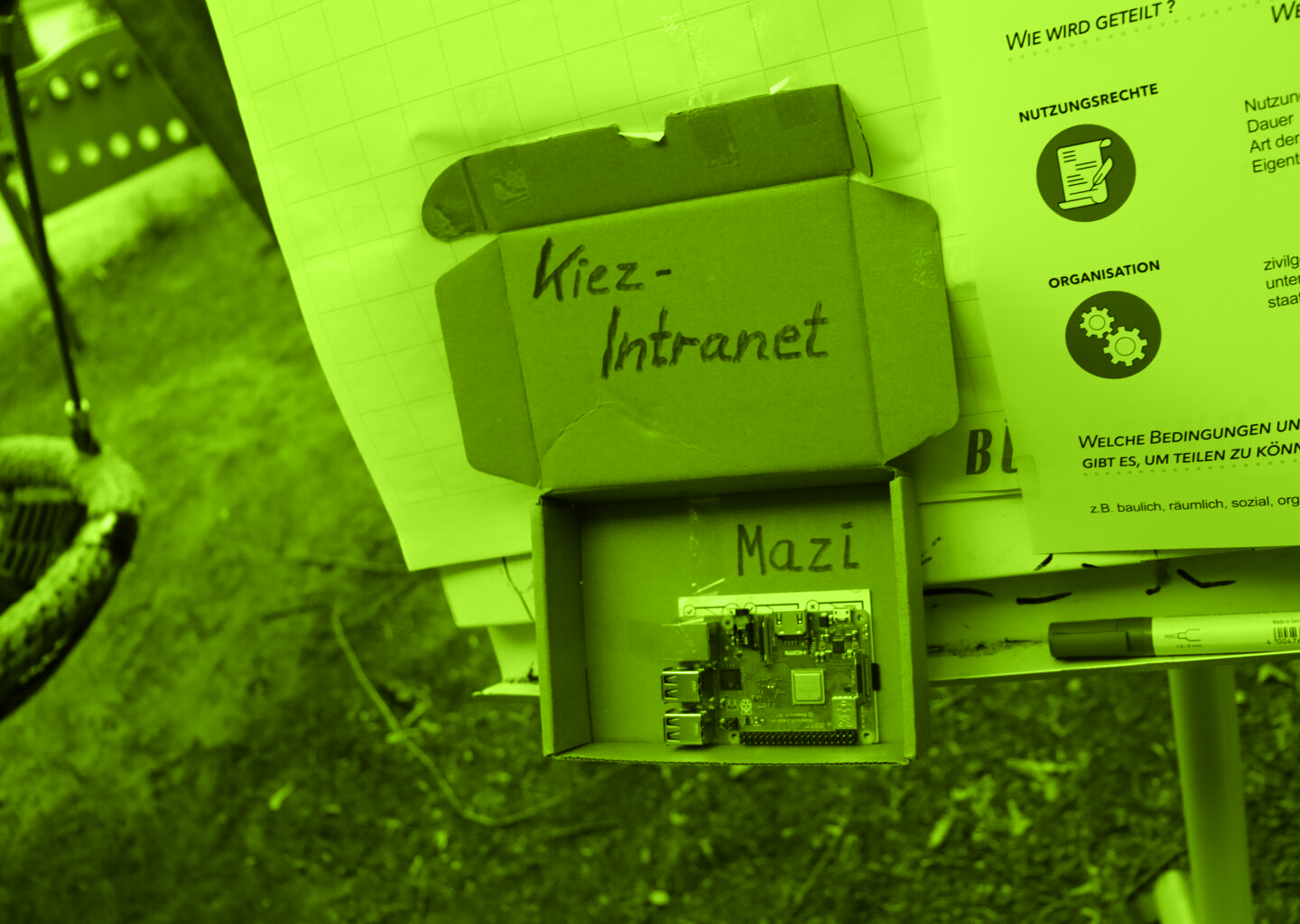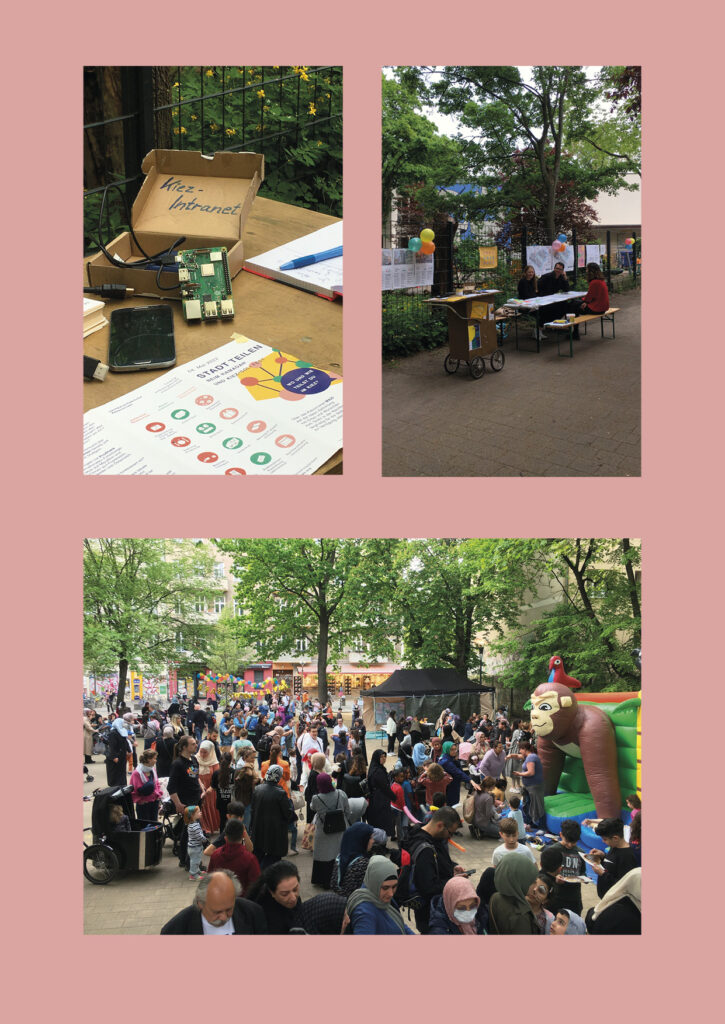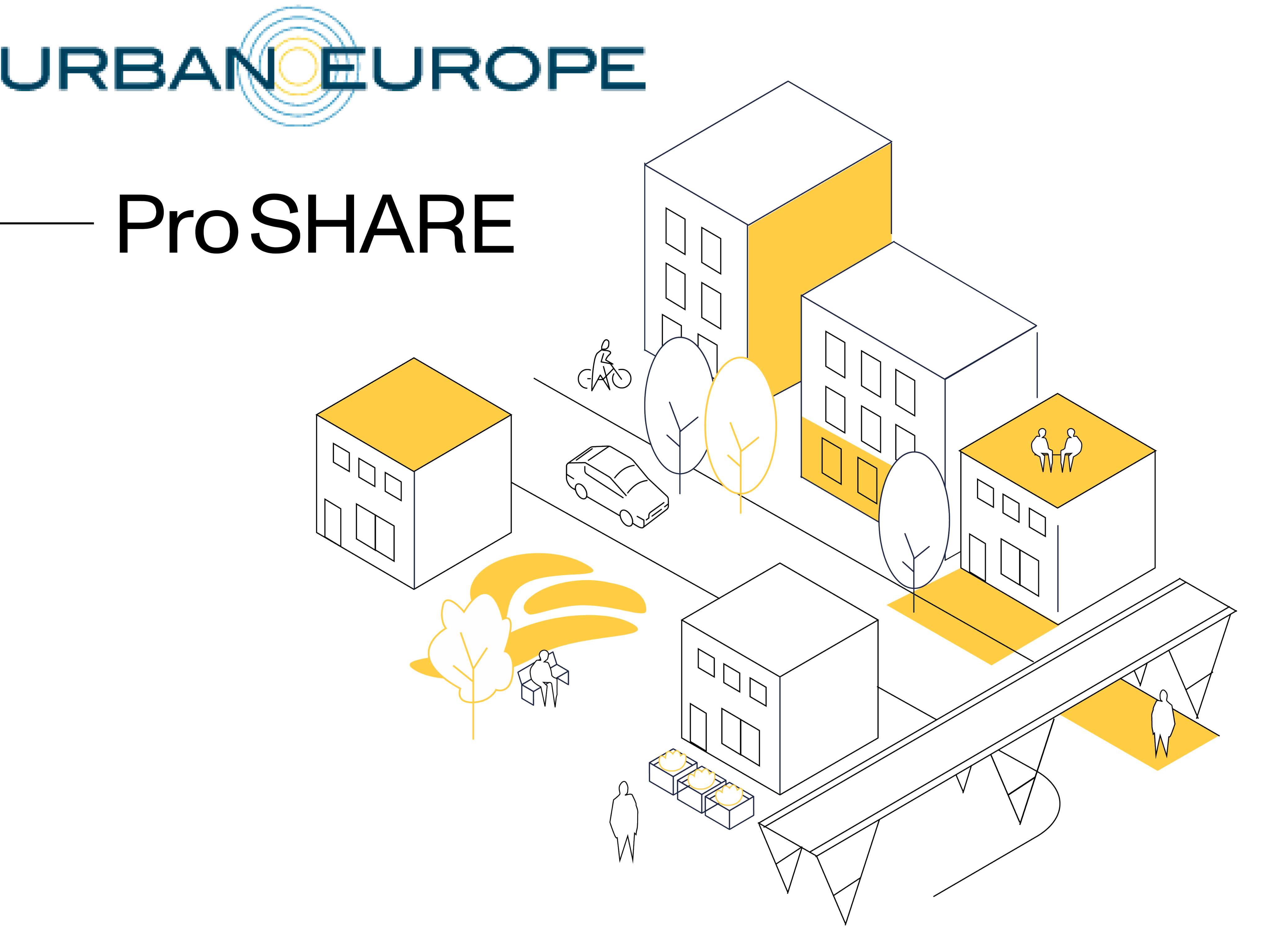
The Community thematic focuses on the social fabric that holds cities together—highlighting the importance of collaboration, local engagement, and grassroots innovation in shaping the urban future. From neighborhood initiatives and civic tech platforms to decentralized communication tools, this area showcases how communities can organize, share knowledge, and drive change collectively.
By strengthening local networks and enabling inclusive participation, we support a city that grows not just through technology, but through trust, cooperation, and shared purpose.
MAZI - is one such initiative. MAZI turns local Wi-Fi into a digital bulletin board—empowering neighborhoods to connect, share, and take action without needing the internet.
Thematic area: Community
The chair of real estate management, smart cities and urban development has realized a variety of transdisciplinary research projects, typically carried out in cooperation with practice partners. Prof. Florian Koch and Nada Bretfeld form the Berlin ProSHARE project team. Nada Bretfeld is a trained social worker and community organizer and interested in issues such as gentrification, housing, and the social change of neighbourhoods. She has cooperated in various research-practice projects with initiatives in the Wrangelkiez neighbourhood in Berlin. The Berlin team co-leads the Work Package 3: “ProSHARE-Labs” together with the University of Sheffield.
HTW and MAZI - a shared vision for a connected future
This project is part of the ProSHARE transnational research project
Learn more about ProSHARE
Counting networks also create the opportunity for dialogue between traffic planners, local authorities and their most affected communities: the citizens who live in - and use - these streets. This is possible for traffic counting in an open and accessible way, namely in the form of a citizen science project.
MAZI means "together" in Greek. The MAZI project provides toolkits (hardware and software) for building local, community-based wireless networks: MAZI zones. A typical example of a MAZI zone would be access via an open Wi-Fi signal – like those found in hotspots in train stations, airports, cafes, etc. The difference is that a MAZI zone doesn't necessarily connect users to the internet, but rather to an alternative, self-designed digital environment (applications and data).
This alternative technology forms the basis for a type of "do-it-yourself" networking. It combines wireless technology, low-cost hardware (<150 euros), and free/libre/open source software (FLOSS) applications. MAZI Zones are wireless networks built using small, portable, and inexpensive computers called Raspberry Pis. Each MAZI Zone offers pre-installed open-source applications that can be easily adapted to the needs of the respective user community. They are available locally to those who log into the network on-site.
How MAZI works
What is MAZI?
How MAZI works

Learn more about MAZI

Get in touch
Newsletter
Visiting hours
Find us at
A project under


7th floor, HTW Campus,
Treskowallee 8,
10318 Berlin
htwsmartcitylab@htw.de
049 12 34 56 78 9
Mon - Fr, 10 am - 6 pm
Social media logos and links
Always stay informed about our current projects and events.
First name
E-mail (required)
Last name
By entering my e-mail address and clicking the “Register” button, I agree that HTW Smart City Lab will regularly send me information on activities, topics and events by e-mail in the form of a newsletter. Extensive information on the registration and de-registration procedure, the shipping provider and the statistical analysis of your data are in our Data protection visible. I can revoke my consent to to HTW Smart City Lab at any time.
Subscribe